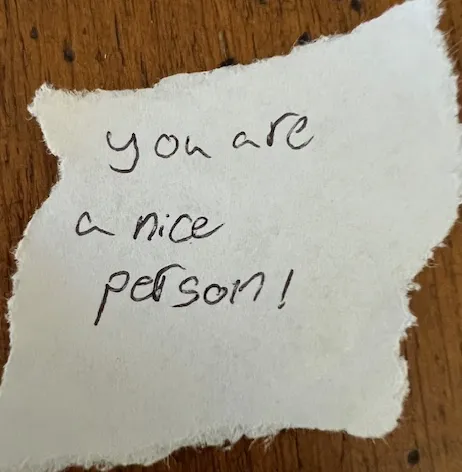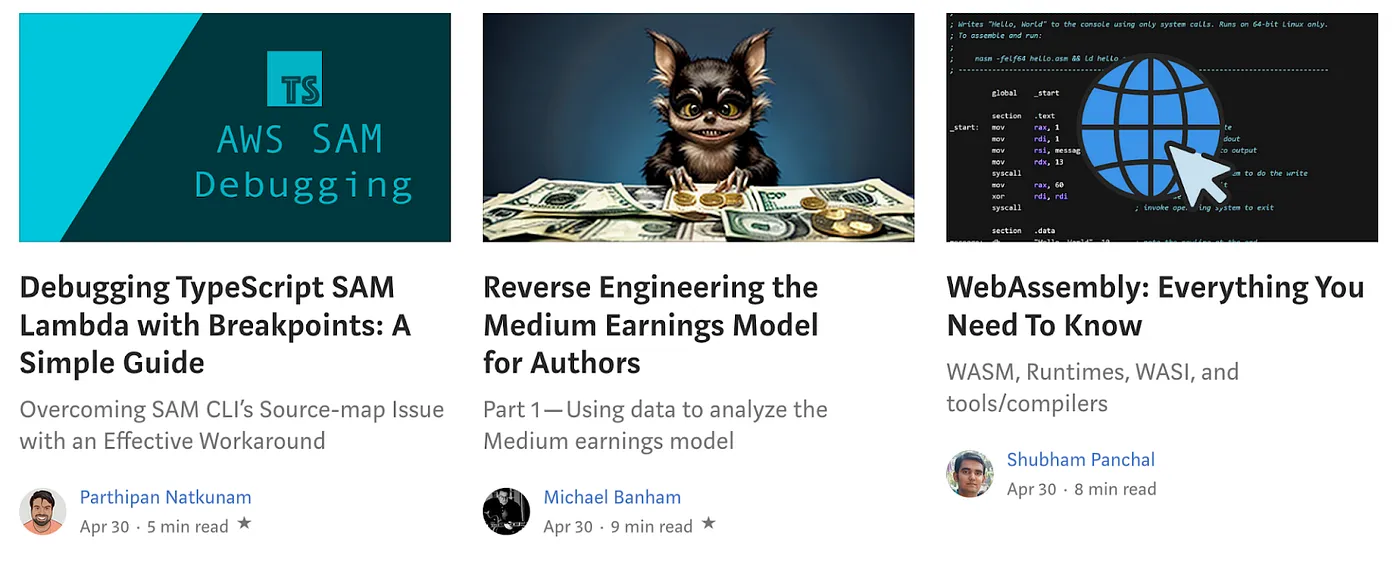
Part 2 — Will you earn more money if you publish on Medium publications?
Let's Continue Our Earnings Journey
In Part 1 of this series, we gathered data from 500 Medium author profiles, encompassing about 50,000 stories, and used the data to investigate the impact of our stories on the number of followers we gain from each story we publish, as well as the impact of follower "Reciprocity". Because, as we learned, the number of followers we have and the number of our stories they read has a big impact on our earnings.
I also promised myself I would not continue this series unless the first story generated at least 5,000 claps, mostly because writing on Medium, at least so far, feels like shouting into the void. Why waste any more time? Plus, I figured that if anything I wrote were to go viral, it would be this series, since it should appeal to everyone that writes for Medium.
Part 1 hasn't generated anything near 5,000 claps, yet here I am. I press on because of this one comment, left on Part 1:
"Wow! This was an incredibly thorough and insightful article!! I have no doubt that in due time you will gain a HUGE following if your work stays this high quality. Thanks for sharing and your time spent!"
I marvel at the impact of even a small kindness, like this comment. It reminded me of a note one of the anonymous kids in my neighborhood recently left on our door:

Another beautiful and unexpected gift!
Both are a reminder that each of our lives, no matter how inconsequential they sometimes seem, are probably far more impactful than we realize.
So Tyler, thank you for your comment, this one's for you.
Should you publish on Medium Publications?
When I joined Medium I was sure the best way to gain followers was to publish on publications with lots of followers. So I researched to find those high-follower publications in my areas of interest and started submitting away. And I discovered that getting stories accepted by popular publications is not so easy. I imagine lots of great writers are thinking the same thing, and there is plenty of competition.
I've written 7 articles so far, and 3 have been accepted for publication, shown below:

Did I earn more with Stories accepted on publications? It doesn't seem like it. All my stories have earned pennies, on publications or otherwise. Those thousands of readers I hoped each publication would deliver have not materialized.
Is it because my story is buried under all the other stories? Nope. A quick glance over at Level Up Coding shows my story is below the fold, but only a couple of pages down. Most visitors to that site will probably discover it. And I see that both stories to the left and right of my story are not doing any better than mine, and both authors have a lot more followers than I do. Which is cold comfort.
How much traffic does Level Up Coding get? Plenty. Looking at some of the free SEO tools (which give wildly divergent answers), they seem to put Level Up at something like 750,000 visitors per month. That's a lot, so that's not the problem.
So the mystery deepens. Perhaps we can use our data to help unravel it.
How much value is gained by publishing on publications?
First, we need to find a measure of goodness for each story. That is, we need a metric specific to each individual story that will help us understand if publishing on a publication helps. We can't look at story earnings, which is the preferred measure, because it's private to each author.
For each story, we have the following publicly available data on Medium:
- Date published
- Number of claps
- Number of comments
- Expected read time (based on word count)
- Publication the story was published on, or blank if self published
- Number of stories (not stated explicitly, but we can count them)
We also know the total number of current followers each author has, but we don't know the timing of when each of those followers began following. Therefore, we don't know explicitly how many followers an author had when each story was published.
We do have claps and comments, and as we learned in Part 1 of this series, both are important contributors to earnings. As a proxy for earnings, claps is probably the better of the two because there are typically a lot more of them, meaning it's a more precise measure. It's less effort to clap than to comment, so we will see more clappers than commenters if they like what they see.
So we've found an acceptable "goodness" measure — claps — that we can possibly use as an earnings proxy.
There is, however, another catch. As time goes by we will gain more followers, and more followers means more readers and that in turn means more claps from our followers, independent of publication. Since we are trying to discover if we get more claps (and more readers) if we publish on a publication, we need to somehow filter out that effect.
There are also a couple of other complicating factors, which we will choose to ignore. For example, our stories will probably get better with time and practice, which will in turn increase claps independent of number of followers, publications, and so on. But there is no easy way to measure the quality of our stories, so we'll just look the other way and assume the quality of our stories is consistent over time.
Finally, we will also assume that for each author, any claps beyond those expected from follower growth are due to each story's presence on a publication versus self publication. This is also something of a grand leap, but so be it, we press on.
Normalizing claps
Have you ever heard the adage that art and science are two peas in the same pod? They are both creative endeavors that often require leaps of the imagination. So we will be creative and make yet another simplifying assumption. Let's assume that the number of followers increases linearly over time with each story written.
Of course, this is not strictly true, but we'll need to make this assumption and hope that our results are "good enough".
We will calculate "Normalized Claps" with the following formulas.
As noted, we assume that each author's number of followers grows linearly as more stories are published, so we have:
followers_i = (i) * followers_total / stories_total
Next, to normalize claps, we'll use this formula:
claps_i_normalized = (claps_i / followers_i)
Here, "i" represents the associated data for the ith story, where "i" runs from 1 to the total number of stories the author has published.
This means, for example, if a story has 10 claps when you have 1 follower, then that story is worth 10 "normalized claps". On the other hand, if a story has 10 claps when you have 10 followers, then that story is worth 1 "normalized clap".
The Big Reveal
Now that we have a goodness measure for each story, the rest is easy.
We can calculate the average of "normalized claps" for the all stories that are self-published versus the normalized claps for stories that are published on Medium publications. Which ever has the larger average normalized claps wins the game.
So without further adieu, the results show that publishing on a publication provides almost 70% more "goodness" than if we self publish. That is, stories on publications receive 1.5 normalized claps per follower versus 0.9 normalized claps for stories that are self published. That's a big difference.
Can we trust this conclusion? Based on my experience writing on Medium so far, it's an unexpected finding. On the other hand, it was drawn from a much larger data set than my own private experience, and the results are compelling. It's not an "in the noise" finding.
It could also be that stories that are accepted for publication are higher quality than those that are not, and this probably accounts for some of the difference in the respective goodness measures.
But it also suggests, especially for new authors like me, that it's useful to start your writing career by publishing on as many Medium publications as you can, at least until you build up a significant follower base and get good at the game. Plus, some publications set a high bar, and your stories that are accepted for publication will probably be better than those that are not.
One final note — now that we have a "goodness" measure we can also look at the effects that other parameters have on goodness, like story read time, topic selection, and a lot more.